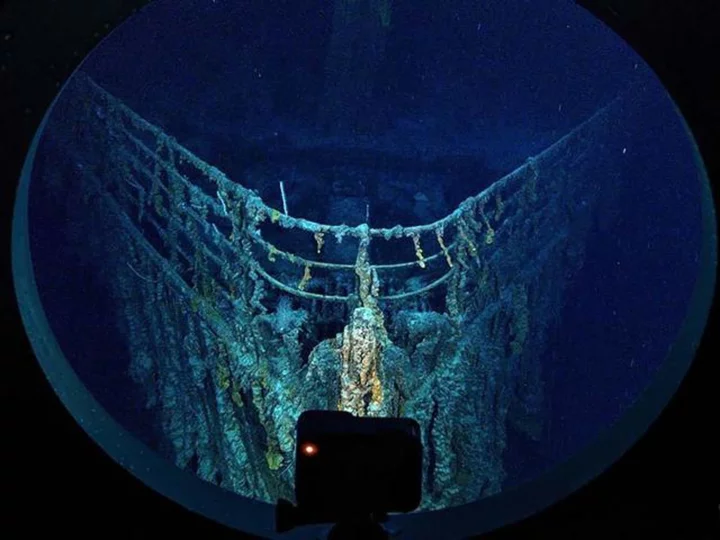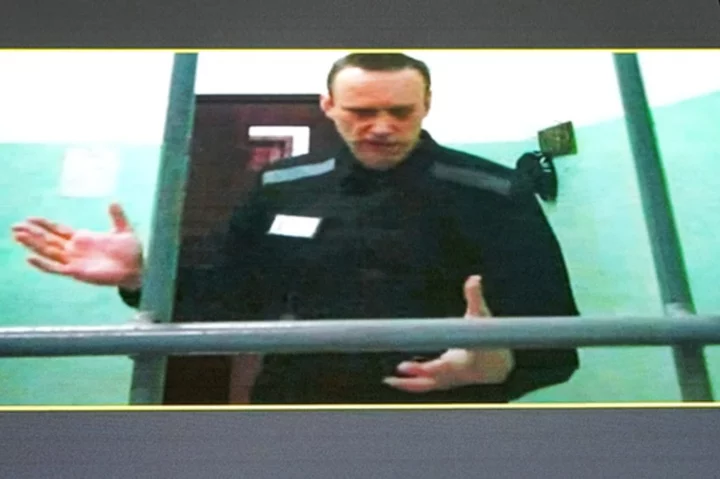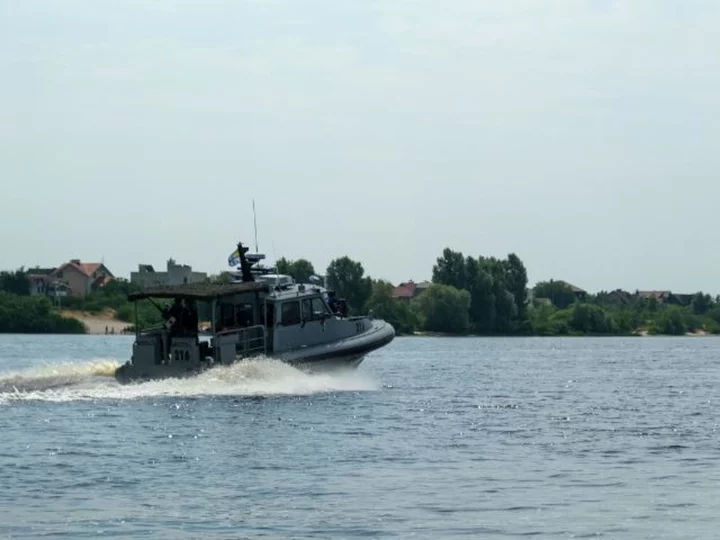Banging sounds were picked up Tuesday from the Atlantic Ocean during the search for the submersible that went missing while touring the Titanic's wreckage with five people on board, signaling "continued hope of survivors," according to a US government memo, as crews rush to ramp up search and recovery efforts.
The sounds from underneath the water were heard by sonar devices deployed to find the lost 21-foot submersible.
It was unclear when the banging was heard Tuesday or for how long, based on the internal government memo obtained by CNN. Another update sent Tuesday night suggested more sounds were heard.
"Additional acoustic feedback was heard and will assist in vectoring surface assets and also indicating continued hope of survivors," according to that update.
The US Coast Guard said underwater noises were detected by a Canadian P-3 aircraft, prompting the relocation of resources to explore their origin. But "searches have yielded negative results," the agency tweeted early Wednesday.
Rolling Stone was first to report the news Tuesday night.
The report comes as oxygen dwindles on the small submersible. There may be less than 30 hours of breathable air left on the vessel as of midnight Wednesday morning -- based on US Coast Guard officials' last estimate at 1 p.m. ET Tuesday that there were about 40 hours left.
The submersible known as "Titan" was carrying one pilot and four "mission specialists" when it lost contact with its mother ship about 1 hour and 45 minutes into its journey to explore the Titanic wreckage, authorities said.
With the clock ticking down, the US is moving military and commercial assets to help as aircraft from the Canadian Armed Forces, the US Coast Guard and the New York Air National Guard continue the massive and complex search above and below water. French President Emmanuel Macron has also dispatched a research ship with an underwater robot to join the search Wednesday, the French government announced Tuesday.
If crews find the missing submersible deep in the ocean, authorities will face a highly complex mission to recover the craft and any survivors, said retired Navy Capt. Ray Scott "Chip" McCord, whose 30 years of experience includes overseeing several salvage operations.
"There's very few assets in the world that can go down that deep," Scott said.
The submersible -- made of highly engineered carbon fiber and titanium -- also weighs 23,000 pounds.
The US Navy is sending subject matter experts and a "Flyaway Deep Ocean Salvage System" to assist in the search and rescue, a spokesperson said Tuesday, explaining that the system can lift heavy undersea objects.
But while ships fan out and resources are put in place, the five people on the vessel face a dire situation, according to David Gallo, senior adviser for Strategic Initiatives, RMS Titanic, which owns the exclusive salvage rights to the Titanic wreck site.
If the submersible is intact, the passengers would be dealing with dwindling oxygen levels and fighting the cold, Gallo told CNN. Hypothermia would be an issue "if the sub is still at the bottom, because the deep ocean is just above freezing cold," Gallo said.
"It's like a visit to another planet, it's not what people think it is. It is a sunless forever, cold environment -- high pressure," Gallo said.
Officials don't know whether the vessel is still deep underwater or if it has surfaced.
"This is a very complex search and the unified team is working around the clock to bring all available assets and expertise to bear as quickly as possible in an effort to solve this very complex problem," US Coast Guard Capt. Jamie Frederick told reporters Tuesday.
When asked, Frederick said he doesn't know if there's enough time to save the five people on board, but "we will do everything in our power to affect a rescue."
Already, more than 10,000 square miles had been searched for the missing submersible as of Tuesday morning, with the US Coast Guard searching an area "about the size of Connecticut" overnight, US Coast Guard First District Commander Rear Admiral John Mauger said.
The Titanic lies at close to 12,500 feet, more than two miles below the surface. The search zone covers an area about 900 miles east of Cape Cod, Massachusetts, and 13,000 feet deep.
The missing submersible was operated by OceanGate Expeditions, a company that organizes a journey to the Titanic's wreckage on the ocean floor for a price of $250,000, according to an archived version of its website.
Officials involved in the search have not publicly named those aboard the submersible, but social media posts and friends and family have identified them.
OceanGate CEO and founder Stockton Rush is among the five onboard, according to a source with knowledge of the mission plan. The company did not immediately respond to CNN's request for comment about Rush being aboard.
The others are British businessman Hamish Harding; Pakistani billionaire Shahzada Dawood and his son Sulaiman Dawood; and French diver Paul-Henri Nargeolet, according to CNN reporting.
A cramped vessel with limited controls and oxygen supplies
The last communication between the vessel and its mother ship, the Polar Prince, came in at 11:47 a.m. Sunday.
The vessel was expected to resurface at 6:10 p.m. but did not do so, and authorities were notified at 6:35 p.m., according to Polar Prince co-owner Miawpukek Maritime Horizon Services.
The mother ship communicates with the vessel by text messages, and it's required to communicate every 15 minutes, according to OceanGate Expeditions' archived website.
"All those things we're used to now -- GPS, Wi-Fi, radio links -- do not work under the ocean," former Navy submarine officer Capt. J. Van Gurley said.
Some parts of Titan are decidedly low-tech. Unlike a submarine, a submersible needs a mother ship to launch it, has fewer power reserves and can't stay underwater as long.
"It is operated ... by a gaming controller, what essentially looks like a PlayStation controller," said CNN correspondent Gabe Cohen, who sat in Titan in 2018 while reporting on OceanGate Expeditions for CNN affiliate KOMO.
It's a "tiny vessel, quite cramped and small," Cohen said. "You have to sit inside of it, shoes off. It can only fit five people."
In case of an emergency, the submersible is equipped with basic emergency medical supplies and pilots have basic first aid training, according to OceanGate Expeditions' website.
The company calls its clients "mission specialists," who are trained as crew members in a variety of different roles, including communicating with the topside tracking team, taking sonar scans and opening and closing the vessel's dome, the archived site says.
Clients do not need previous maritime experience to join as mission specialists, it adds.
OceanGate in a statement on Monday said "every step possible is being taken to bring the five crew members back safely. We are deeply grateful for the urgent and extensive assistance we are receiving from multiple government agencies and deep-sea companies as we seek to reestablish contact with the submersible."
Deep sea-mapping company Magellan, known for their deep-sea imagery of the Titanic, received notice from the company running the Titanic expedition to mobilize early Monday "by all means necessary-- time is of the essence," Magellan Chairman David Thompson told CNN.
But Magellan needs aircraft that can take its deep-sea diving equipment to the search area -- something they don't have, and they had yet to hear back Tuesday from the US Air Force or UK Royal Airforce about whether they can offer Magellan the use of a plane, Thompson said.
Who are the people aboard the Titan
As the search drags on, friends and family members of those on board are sharing details about their loved ones as they wait for news.
A friend of Harding told CNN on Tuesday that he is "larger than life."
"He lives exploration. He is an explorer to the core of his soul," fellow explorer Jannicke Mikkelsen said. "He has been to the bottom of planet earth in the Mariana Trench ... he's even been in space. We circumnavigated the planet together ... the north and south pole, and set the world speed record."
Harding has an extensive record of adventures: In 2019 he took part in a flight crew that broke the world record for the fastest circumnavigation of the globe via both poles, and in 2020 he became one of the first people to dive to Challenger Deep in the Pacific Ocean, widely believed to be the deepest point in the world's oceans.
And last year, he paid an undisclosed sum of money for one of the seats on Blue Origin's space flight.
The day before the vessel went missing, Harding wrote of the Titanic mission: "I am proud to finally announce that I joined OceanGate Expeditions for their RMS TITANIC Mission as a mission specialist on the sub going down to the Titanic."
Nargeolet is a Titanic expert who has taken the trip every year, completing more than 37 dives to the wreck, according to an archived version of OceanGate Expeditions' website accessible via the Internet Archive's Wayback Machine.
A friend of Nargeolet, Mathieu Johann, told CNN Tuesday the missing submariner is a "hero" and said, "I hope that, right to the end, like in the movies, he'll reappear very quickly to reassure us all."
"What we're going through right now is this interminable wait," Johann said.
The Dawoods, a father and son also aboard the vessel, are part of a prominent Pakistani business family. Dawood Hercules Corporation, their business, is among the largest corporations in the country, with a portfolio spanning energy, petrochemicals, fertilizers, IT and food and agriculture.
Shahzada Dawood is also a trustee of the SETI Institute in California, a research organization, and a number of other foundations.
A statement from their family said the duo had embarked on the "journey to visit the remnants of the Titanic in the Atlantic Ocean."









